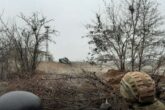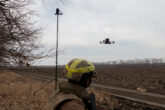July 26, 2021
The US Army’s new iron triangle: The coming budget crunch and its implications for modernization
It has come to be seen as virtually axiomatic in defense circles that the U.S. Army will serve as a bill payer for air and naval modernization, with even the chairman of the Joint Chiefs of Staff predicting a “bloodletting.” At the same time, the Army believes it must prepare for three challenges, each with distinct implications for the future force: blunting Russian aggression along NATO’s eastern frontier, defeating China in a war in the western Pacific and hedging against everything else. As a result, budget cuts will likely present the Army with something of an iron triangle among these challenges — at best only able to afford a future force prepared for two, but not all three.
As Futures Command and the Army grapple with the implications of the looming budget crunch, it is imperative that they first answer two more fundamental questions: How should the Army prioritize these challenges, and where — and how much — can it afford to take risk?
The answers to these questions will do much to provide direction for the difficult trades the Army will face in a world of shrinking budgets.
How should the Army prioritize these challenges, and where — and how much — can it afford to take risk?
Each side of the iron triangle comes with its own implications for doctrine, force structure, readiness, posture and modernization. And while there is certainly some commonality and fungibility across them, the optimal force for each differs considerably. Blunting Russian aggression entails conducting large-scale maneuver warfare on highly contested continental battlefields. This means a future force centered on heavy armor — backed by artillery, mobile air defenses and other enablers — that is sufficiently forward-postured to be able to overcome the tyranny of time and counter a short-warning attack.
Defeating China, in the Army’s view at least, entails contributing kinetic and non-kinetic fires, air defense, and other enablers to support the joint force in a primarily air and maritime fight. This means a fires- and enabler-centric future force that can operate in a highly geographically dispersed fashion across the vast expanses of the Pacific theater. Although the strategic deployment problem is somewhat less acute as compared to Europe, the distances involved coupled with Chinese counter-intervention capabilities still calls for a force posture oriented on forward presence and rapid reinforcement.
Read the full article from Defense News.
More from CNAS
-
Defense / Transatlantic Security
When Defense Becomes Destruction: Austria-Hungary’s Mistake and Ukraine’s RiskThis article was originally posted on War on the Rocks. The southeastern Polish city of Przemyśl, with its elegant 19th century Habsburg-era train station, remains one of the ...
By Franz-Stefan Gady
-
Defense / Transatlantic Security
Ukraine’s Catch-22 MomentThis article was originally published in the Financial Times. In Joseph Heller’s wartime classic, Catch-22, the protagonist Yossarian seeks out the US army surgeon Doc Daneeka...
By Franz-Stefan Gady
-
CNAS Insights | Budgetary Own Goals Undermine “Speed and Volume”
On November 7, Secretary of Defense Pete Hegseth laid out a plan to overhaul the Department of Defense’s (DOD’s) acquisition system. Placing an emphasis on delivering new capa...
By Philip Sheers, Carlton Haelig & Stacie Pettyjohn
-
Drones: Who Is Making the New Weapons of War?
From Ukraine and Russia to Gaza and Sudan, drones have become a key weapon of war. Which companies are making them, and profiting from this rapidly expanding but controversial...
By Stacie Pettyjohn




